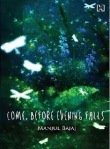This is hilarious, and also quite alarming. In the times of breathless non-stop reporting on the AArushi murder case and sensationalised reporting on the mas media, here is a news, or is it non-news, item.
In recent weeks, strange reports made headlines, with the media trying to milk every drop of sensational value out of them;
Some woman trying to kiss a radio jockey,
a live baby wrongly declared dead in a Private hospital,
A teenaged girl from Kolkata with a health problem (nervous breakdown or spinal problem?) attributed at various times to the parents' attitude, or to harsh remarks made by judge in a reality show,
The list seems unending. And then, as some point out, real news we can use seems to be relegated to fine print in some back page. ARe sschools and offices going to remain open during a strike? It's a tough job wading through the sensational reports to find out.
Several Indian newspapers fell victim a couple of days ago to a hoax about the arrest of
a supposed Nazi war criminal. Apart from the media’s alarming
ignorance, the episode also reveals our fascination for unconfirmed
news from ‘intelligence’ sources.
Here are excerpts from an article by Siddharth Varadarajan in The Hindu;
On Sunday, an email message from ‘Hamman Smit,’ press officer from
‘Perus Narpk’ from Shede Road in Berlin arrived in the inbox of several
journalists in Goa and Bangalore. The message identified ‘Perus Narpk’(anagram of super prank)
as the “intelligence wing of the German Chancellor’s core” (sic) and
claimed credit for the arrest on the Karanataka-Goa border of a
fugitive Nazi war criminal named Johann Bach who was responsible for
the killing of 12,000 Jews in the ‘Marsha Tikash Whanaab’ concentration
camp (there was no such camp, a quick Internet search would have proved it if any journalist had cared to verify the 'facts') ). The email contained a press release full of outlandish details
about the operation, including the claim that the octogenarian Bach had
revealed his identity to a holidaying Israeli couple during a rave
party in Goa, and had stolen an 18th century piano from a museum in
‘East Berlin’ which he was trying to sell through a local newspaper.
Suggestive clues
The email was literally full of clues suggesting it was a hoax. The
author revealed he was “hamming,” his office was on ‘Shady’ road And yet, a number of
hacks and their editors in newspapers of repute such as The telegraph, The Indian express and Deccan Herald rushed to print with this sensational story
without bothering to check any of its hilarious details.
This brilliant hoax was the handiwork of ‘Penpricks’ a journalists’
collective in Goa whose blog, penpricks.blogspot. com, is dedicated to
discovering “the rotund flanks and the shaggy underbelly of the Goan
media. And of course, the rare honest rib.” One of its more celebrated
exposes was the debunking of a story run by CNN-IBN about the Russian
mafia taking over land in Goa. Penpricks also criticised The Herald
for offering to strike a deal for the sale of lead editorials after it
posed as a business house interested in positive coverage.
But even if the immediate target of Penpricks was the Goan media, it
has succeeded in exposing the underbelly of the Indian media as a
whole. Indeed, there is nothing surprising about the hoax receiving
such widespread play in the national press. For though the ‘Johann
Bach’ story was outlandish, it was no more so than the reports
regularly put out by Indian police departments about the arrest of
terrorism suspects."
Shameful it is indeed. The declining standards of media reports, doubtful value of 'news' which is given almost 24x7 coverage on the gazillion news channels, such trends are cause for concern.
There are several possible causes for this. IMHO
1. The dumbing down of news to suit the needs of commercial sponsors and various lobbies.
2.Competition among too many media channels vying for ever sensational 'scoops', to ensure TRP ratings.
3. The mushrooming of mass communications schools, with teachers who often have only theoretical and no real practical experience in journalism.
4. It is a fact that the brightest youngsters opt for other courses, leaving the more average students the option of journalism.
Phew, maybe the whole world is simply dumbing down. Tomorrow, someone will flash messages on TV, FM radio, and all over every newspaper that the sky is green with purple polka dots. And if the enws reports say so, we will accept it.
 Reading Arunava Sinha's recent translation of Banaphool's short stories was like revisiting a dear friend after years. I had first read Banaphool's writings in the original Bangla long ago during my school and college days. To re-read them in an accessible and smooth English translation was a great pleasure.
Reading Arunava Sinha's recent translation of Banaphool's short stories was like revisiting a dear friend after years. I had first read Banaphool's writings in the original Bangla long ago during my school and college days. To re-read them in an accessible and smooth English translation was a great pleasure. 















.jpg)



























